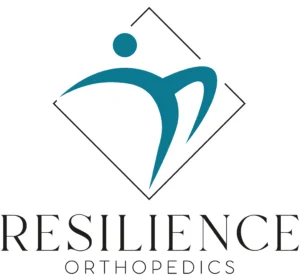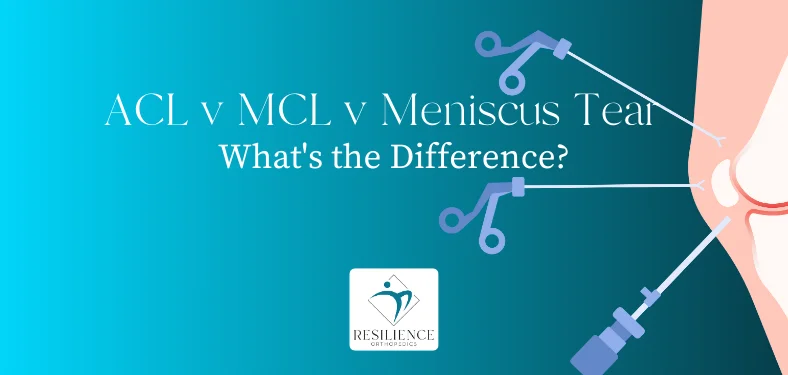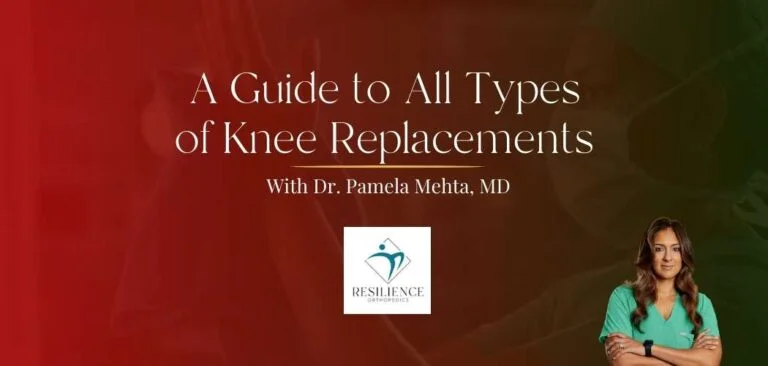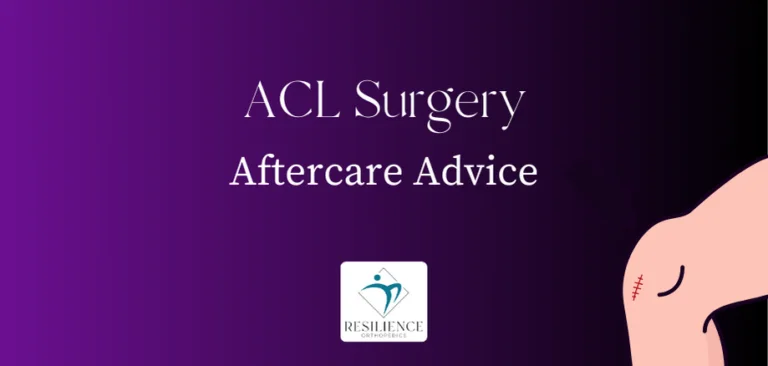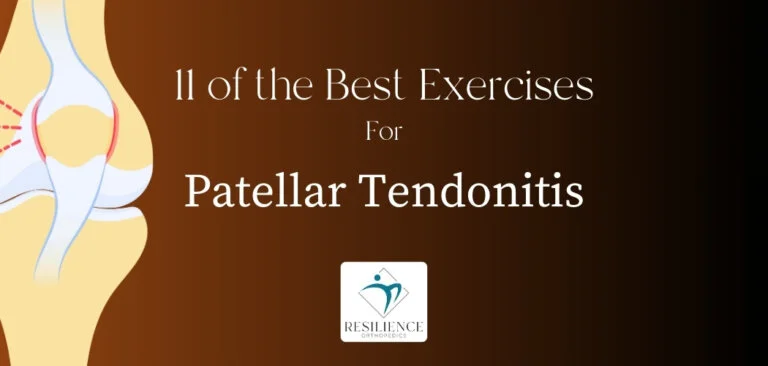Table of Contents
About the ACL, MCL, and Meniscus
Sports-related injuries are not uncommon, and among the most prevalent are tears in the knee joint.
The knee is a complex joint that consists of various ligaments and structures. Tears can occur in different parts of the knee such as the anterior cruciate ligament (ACL), medial collateral ligament (MCL), or the meniscus. Identifying the specific type of tear is crucial for appropriate diagnosis and treatment.
In this article, we will explore the symptoms, diagnosis, and treatment options for:
- ACL Tear
- MCL Tear
- Meniscus Tear
As well as the expected recovery time for each.
The Anterior Cruciate Ligament (ACL)
The ACL is a ligament that runs in front of the knee and helps to keep the tibia (shinbone) from moving too far forward in relation to the femur (thighbone). It is one of the major ligaments in the knee that helps stabilize the joint.
An ACL tear often occurs during sporting activities including:
- High-impact activities or collisions
- Sudden changes in direction
- Landing badly after a jump.
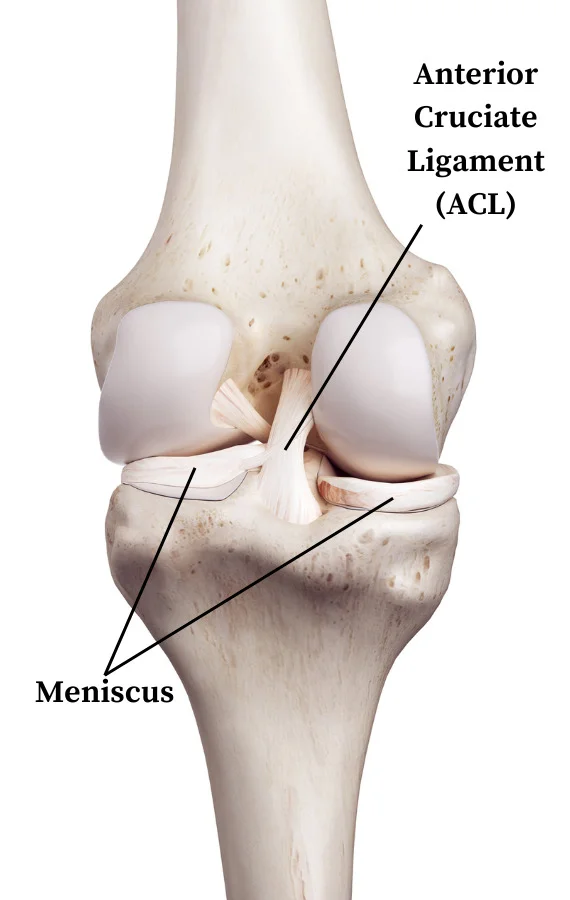
The Meniscus
The menisci are two C-shaped pieces of cartilage that act as a cushion between the thigh bone (femur) and the shin bone (tibia). It helps absorb shock and provides stability to the knee joint.
Meniscus tears frequently occur during activities that involve twisting or rotating the knee, though the type of tear depends on the mechanism of injury. The likelihood is increased if you are bearing weight.
The Medial Collateral Ligament (MCL)
The medial collateral ligament (MCL) is located on the inner side of the knee. It handles stability against forces applied from the outer side of the knee. It also helps to keep the tibia from moving too far to the side.
MCL tears commonly result from a direct blow to the outer side of the knee or a forceful twisting motion.
Symptoms – ACL vs MCL vs Meniscus Tear
Symptoms for these conditions often overlap. However, there are features that help you tell between an ACL tear, MCL tear, or meniscus tear.
For instance:
- ACL tears are often associated with a popping sound, immediate swelling, and a feeling of instability.
- MCL tears commonly cause knee pain and tenderness along the inner side of the knee.
- Meniscus tears may produce a popping sensation, locking or catching of the knee, and difficulty straightening the leg.

Below is a table comparing the three tears:
| Symptoms | ACL Tear | MCL Tear | Meniscus Tear |
| Pain | Common | Common | Common |
| Swelling | Significant, rapid onset | Possible, but less severe | Possible, but less severe |
| Popping sensation | Often present | Uncommon | Possible, especially when torn |
| Instability | Feeling of the knee giving way | Feeling of looseness | May experience knee “locking” or catching |
| Difficulty bearing weight | Common | Possible, but less severe | Common |
| Tenderness | Possible | Possible | Possible, especially along joint line |
| Range of motion | Limited range of motion | May have reduced range | May have limited straightening ability |
| Specific area of pain | Generalized knee pain | Inner side of the knee | Throughout the knee, especially along joint line |
How Do I Tell the Difference Between ACL, MCL, or Meniscus Tear
The symptom list above, as well as the cause of injury, might help you to determine roughly which injury you have. Yet, it’s common for acute knee injuries to mimic others and you can never be 100% sure based on symptoms.
Accurate diagnosis of the type of knee tear is crucial for proper treatment. Medical professionals use various diagnostic tools, including:
- Physical examination
- Simple knee x-rays
- More complex tests such as MRI scans
- Arthroscopy (only if required)
These methods help determine the injury severity and tell us what part of the knee is involved in the tear. To get an accurate diagnosis, you should seek help from a board-certified orthopedic doctor.
Book a Consultation with Dr. Pamela Mehta, MD
The Best Orthopedic Surgeon in San Jose
Dr. Mehta is a board-certified orthopedic surgeon who can help you recover from your joint condition. If you:
- Are Suffering From Pain and Mobility Issues
- Need Orthopedic Assessment and Advice
- Want Treatment From a Top Orthopedic Doctor
We Can Help
Combined Knee Injuries – ACL +/- MCL +/- Meniscus Tear
In some cases, it is possible to have more than one type of tear.
For example, during a high-impact injury, it is not uncommon to sustain both an ACL tear and a meniscus tear. Multiple tears can complicate the diagnosis and treatment plan. This makes it even more important to seek care from an expert knee surgeon.
Combined ACL and Meniscus Tear
Patients who suffer an ACL tear can also have a meniscus tear occur, with this being seen in up to 17% of ACL patients. When these injuries occur together, it is called a combined ACL and meniscus tear.
This is often seen in athletes who take part in sports that involve a lot of twisting and pivoting, such as:
- Football
- Basketball
- Soccer
- Skiing
- Tennis
This type of injury can also occur due to high-impact collision during sports.
The symptoms of a combined ACL and meniscus tear can be like the symptoms of an ACL tear or meniscus tear on its own. The type of treatment that you will need will depend on the severity of your injury.
In most cases, knee surgery is recommended for a combined ACL and meniscus tear. These two procedures have different aims for rehabilitation:
- ACL repairs respond to aggressive rehabilitation to improve the range of movement
- Meniscus tear repairs do better with slow healing.
This makes the decision to operate on both at the same time or not more complex.
Your surgeon will advise whether the best option is separate procedures or combined. Both options have their advantages and can affect recovery time. They also impact scar tissue and the ability to have aggressive knee rehabilitation and physical therapy.
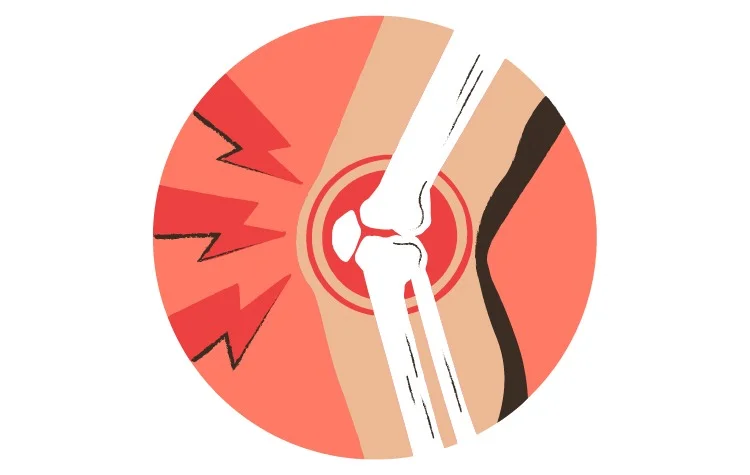
Combined ACL and MCL Tear
When the anterior cruciate ligament (ACL) and medial collateral ligament (MCL) tear at the same time, we call it a combined ACL and MCL tear. This injury is the most common type of combined ligament injury of the knee. MCL injury occurs at the same time as 20-30% of ACL tears.
Traditionally, MCL tears are treated without any operation by allowing the knee to heal in a brace. This is because the knee brace helps to stabilize your knee and prevent it from buckling.
However, when an ACL and MCL tear happen at the same time, your knee becomes very unstable. You’ll likely need knee surgery if:
- There is a complete or severe ACL/MCL tear
- You’re struggling to mobilize without help.
- A trial of non-surgical treatment was unsuccessful
The type of surgery required depends entirely on your background and injury severity. Your surgeon will work with you to choose the best procedure for your circumstances.
While the ACL is usually repaired during this procedure, whether MCL surgery is also required is controversial. There isn’t currently a consensus on the best approach. An expert knee surgeon like Dr. Mehta can advise the option that helps you return to your activities as soon as possible.
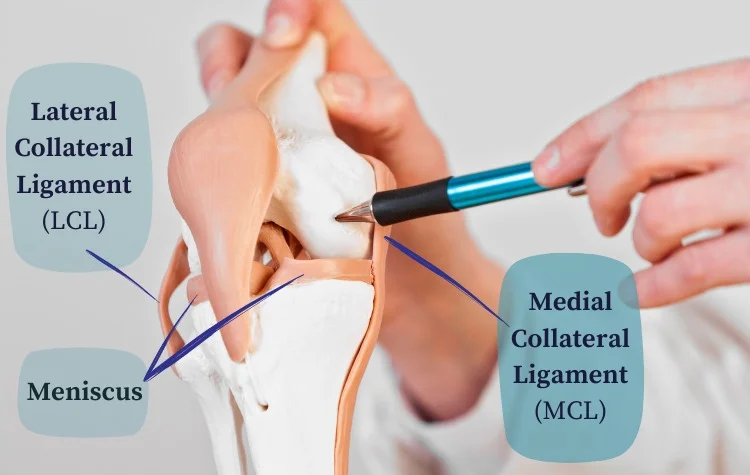
Combined MCL and Meniscus Tear
Injuries of the medial collateral ligament (MCL) are often confused with a lateral meniscus tear and vice versa. However, it’s possible to have both injuries at the same time. This is called a combined MCL and meniscus tear.
This injury is unusual and will need specialist advice from a knee surgeon to get the best treatment.
Combined ACL, MCL, and Meniscus Tear – The Unhappy Triad
A combined ACL, MCL, and Meniscus tear is known as the unhappy triad or “knee blowout”. This is a complex knee injury that can result from high-force contact to the lateral (outside) part of the knee. It often occurs when the foot is fixed to the floor, such as during sports such as football, rugby, or motocross.
This type of injury usually involves the lateral (rather than medial) meniscus in athletes. It’s not uncommon for these complex injuries to include other structures such as:
- Posterior Cruciate Ligament (PCL)
- Lateral Collateral Ligament (LCL)
- Quadriceps Tendon Injury
This type of injury will almost always require surgery – usually of the ACL and often the meniscus. The MCL is also sometimes operated on. This depends on your current function and whether your surgeon thinks the MCL can heal without surgery.
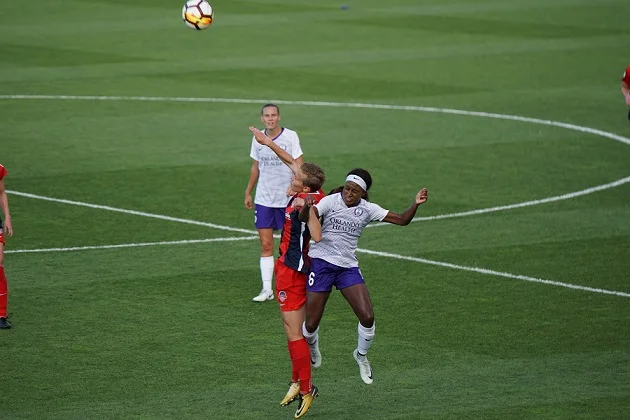
Treatment for ACL, MCL, and Meniscus tear
Treatment for ACL, MCL, and meniscus tears can vary depending on:
- The severity of your injury
- Your age
- Your activity level
- Overall health & other medical conditions
Non-surgical treatment
In most cases, non-surgical treatment is recommended for minor tears. It is also the best option for people who are not suitable candidates for surgery. This may include:
- Rest
- Resting the knee and avoiding activities that put stress on it can help to reduce knee pain and swelling.
- Ice
- Applying ice to the knee for 20 minutes at a time, several times a day can help to reduce pain and swelling.
- Compression
- Wrapping the knee with an elastic bandage or compression sleeve can help to reduce swelling.
- Elevation
- Keeping the knee elevated above the level of the heart for 20 minutes at a time, several times a day, can help to reduce swelling.
- Physical therapy
- Physical therapy can help to improve the range of motion, strength, and flexibility of the knee.
- Use of supportive braces or crutches
- A brace or crutches may be used to support the knee and prevent further injury.
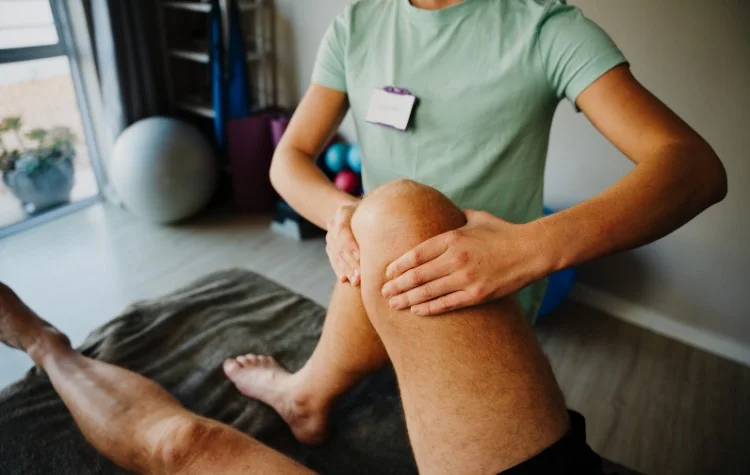
Surgical Treatment
In more severe cases, surgical intervention may be necessary to restore stability and function to the knee joint. The type of surgery performed will depend on the specific injury:
- ACL repair
- In an ACL repair, the torn ligament is stitched back together.
- ACL reconstruction
- In an ACL reconstruction, a new ligament is made from a piece of tendon from another part of the body.
- Meniscus repair
- In a meniscus repair, the torn cartilage is stitched back together.
- Meniscus removal
- In some cases, the torn cartilage may need to be removed. This is usually only done if the tear is too large to repair.
- MCL Repair
- While MCL tears are mostly treated without surgery, occasionally a severe tear or combined injury will require surgical treatment.
After surgery, you will need to wear a brace and follow a rehabilitation program. The exercise program improves the range of motion, strength, and flexibility of your knee. The amount of time it takes for you to recover from surgery will vary. This depends on the type of surgery performed and how quickly your joint heals.
Knee Rehabilitation
Rehabilitation is an important part of the treatment process for ACL, MCL, and meniscus tears. The goal is to restore range of motion, strength, and flexibility in the knee.
This begins with gentle exercise and progresses to more challenging exercises. The exercises will be more challenging as your knee improves. This will be guided by your orthopedist or physical therapist.
Ready to Recover?
Take the first step in getting back to your normal self, and book an appointment with Dr. Mehta today.
We’re ready when you are!
Activity Restrictions After Surgery
You will need to follow your surgeon’s advice on what you can and can’t do after surgery. It can be frustrating to avoid certain activities. But giving your knee joint a rest while it heals is essential to your long-term recovery. This will help you get back to full strength as quickly as possible.
These restrictions will vary depending on the type of surgery performed and how your knee is healing. In general, you’ll need to avoid activities that put stress on the knee, such as running, jumping, and turning.
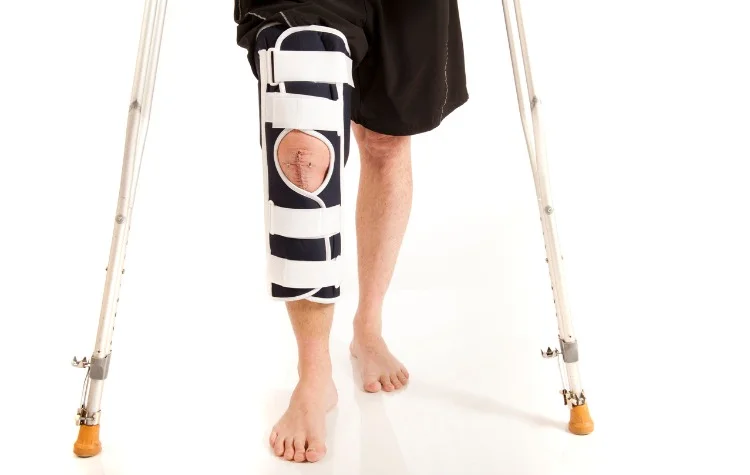
Recovery Time for ACL, MCL, and Meniscus Tear
The prognosis for ACL, MCL, and meniscus tears is generally good. With proper treatment, most patients are able to return to their pre-injury activities. However, there is always a risk of re-injury, especially in athletes.
The recovery time for ACL, MCL, and meniscus tears can vary significantly depending on several factors, including:
- Extent of the injury
- Surgical vs non-surgical treatment
- Combined knee injuries
- Age
- Other health problems
It is essential to note that each case is unique, and it is important to follow the guidance of a medical professional throughout the recovery process.
| Type of Tear | Recovery time |
| ACL tear | 6 to 12 months |
| MCL tear | 3 to 6 weeks |
| Meniscus tear | 4 to 6 weeks (with surgery) |
ACL Tear
Recovering from an ACL tear typically takes between 6 to 12 months. During this period, it is common to wear a brace and use crutches to assist with mobility.
Physical therapy plays a crucial role in the rehabilitation process. It focuses on restoring the range of motion, strength, and flexibility in the knee. The program may include exercises to strengthen the surrounding muscles and promote stability.
An ACL injury without any damage to other parts of the knee is known as an isolated ACL tear. The rehabilitation for this is usually quite intensive. This can help you get your range of movement back as soon as possible.
Gradually, the knee strengthens and your range of motion improves. From here, you can progress to more challenging activities and sports-specific training.
MCL Tear
The recovery time for an MCL tear is generally shorter, ranging from 3 to 6 weeks.
Treatment often involves wearing a brace to stabilize the knee. This prevents excessive stress on the injured ligament. During this period, you should avoid activities that may put extra strain on the knee, such as:
- Running
- Sports
- Intensive manual labor
- Jumping
We recommend physical therapy to help restore range of motion, strength, and stability. The therapy may include exercises targeting the quadriceps, hamstrings, and calf muscles. It helps with balance and coordination training as well.
Meniscus Tear
The recovery time for a meniscus tear can vary based on the severity of the tear. In some cases, small tears may heal on their own with conservative treatment, including “RICE”:
- Rest
- Ice – placing frozen peas or ice on the joint
- Compression – using bandages
- Elevation – raising your leg
This process can take several weeks to a few months.
More extensive tears may need surgery. Following meniscus surgery, the recovery time is typically around 4 to 6 weeks. During this time physical therapy is important to regain strength, range of motion, and stability in the knee joint.
Conclusion
Injuries to the knee joint, such as ACL, MCL, and meniscus tears, can be painful and debilitating. Understanding symptoms, investigations, and treatment helps you get the right care to recover.
| Injury Type | ACL Tear | MCL Tear | Meniscus Tear |
|---|---|---|---|
| Typical Causes | Sudden Turning Impact Sports Bad landing | Blow to the outside of the knee Forceful twisting | Twisting while bearing weight |
| Typical Symptoms | Knee giving way Generalized pain Non-weight-bearing Reduced range of movement Swelling Popping Sound | Knee looseness Pain on the inner side May be able to bear weight Mildly reduced movement Mild swelling | Knee locking Pain along the joint line Non-weight-bearing Reduced Knee Straightening Mild swelling |
| Treatment | Surgery more likely | Non-surgical more likely | Dependant on injury |
| Recovery Time | 6 to 12 months | 3 to 6 weeks | 4 to 6 weeks (with surgery) |
